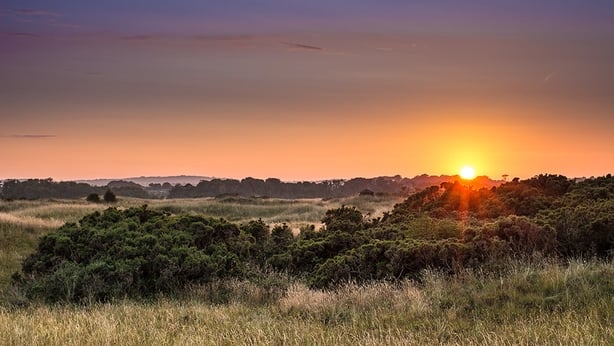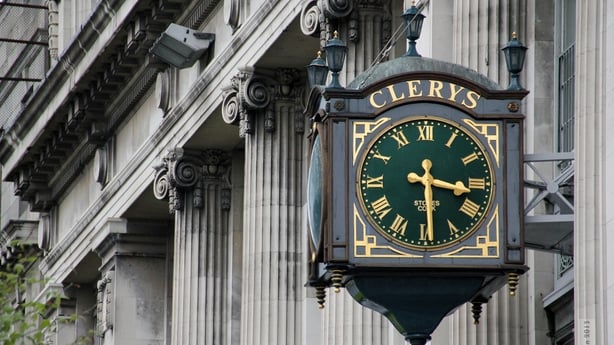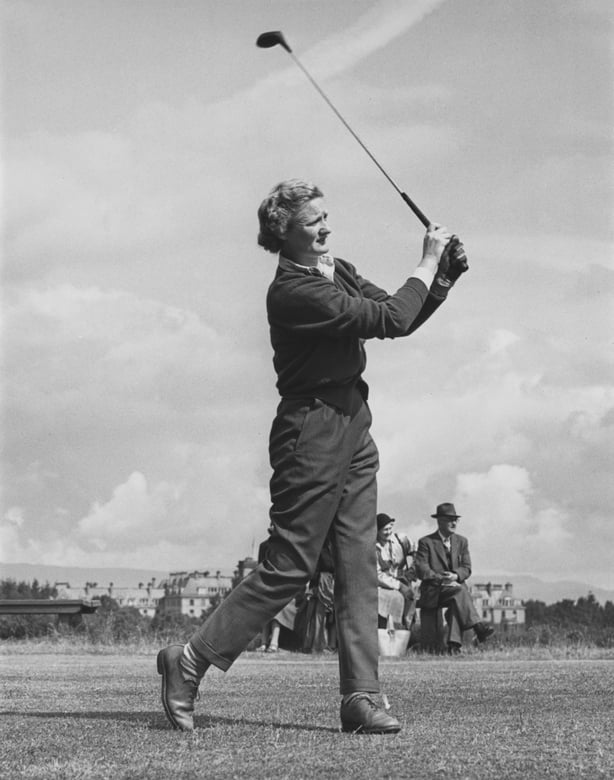She was a brilliant golfer who kept her day job and stood by her principles. In this extract from the Dictionary of Irish Biography's new book Irish Sporting Lives, Linde Lunney tells the story of Philomena Garvey
Philomena Kathleen Garvey was born 26 April 1926 in the village of Baltray, Co. Louth, the youngest of six children (two daughters and four sons) of James Garvey, a seaman, and his wife Kathleen (née Owens), whose father had been a ship's captain. Philomena went to the girls’ national school in Termonfeckin, Co. Louth. From an early age, like her siblings, she played golf at every opportunity at their local links course at Baltray, the County Louth Golf Club. Her brother Kevin Garvey won the East of Ireland championship in 1942.

That golfing life
That same year, Philomena, aged sixteen, won the captain’s prize at Baltray; from then on, golf was the most important thing in her life. She worked first as a clerk in the Irish Hospitals Sweepstakes office in Ballsbridge, Dublin, and later as a sales assistant in Clery’s department store but returned to Baltray as often as she could to play her home course. She was fortunate that the shop’s owners, Denis Guiney and his wife Mary Guiney, were interested in golf and allowed her to take unpaid leave during the summer to practise and compete.
In 1947 she considered accepting an offer of marriage, but since it was conditional on her giving up golf, she turned it down and never married. (A contemporary English male golfer publicly expressed the view that a married woman playing golf well enough to win championships provided sufficient grounds for divorce.)

In 1944 Garvey was defeated in the Leinster Cup by Clarrie Reddan, ten years her senior and also a member of the County Louth club, but in subsequent encounters Garvey triumphed. The two women were never friendly. The final of the 1946 Irish ladies’ championship, in Lahinch, was particularly thrilling, with Garvey winning a play-off decided by a stymie on the thirty-ninth green. Commentators marvelled at her focus and concentration, as much as at her technique. For most of her playing career, she was the pre-eminent woman golfer in Ireland; she won fifteen Irish ladies’ amateur championships from 1946 to 1970 without ever losing a final in that competition.
International success
In 1950 Garvey reached the quarter-finals of the US Open championship. Normally, she could not afford to travel to the United States to compete there, but that year her way was paid as a member of the British and Irish Curtis Cup team. Garvey was selected by the Ladies’ Golf Union (LGU) for the prestigious Curtis Cup team in 1948, 1950, 1952, 1954, 1956, 1958 and 1960, and in 1952 contributed to the first ever victory of the Great Britain and Ireland team over the United States.

In 1958, however, the LGU produced a new emblem for the Curtis Cup team, representing only the Union flag, and Garvey refused to play if there was no recognition of Ireland. She offered to wear the earlier version of the badge, representing emblems of all four home countries, but the LGU was immovable.
Her stand was supported by the non-playing captain of the Curtis Cup team, Daisy Ferguson from Royal County Down, and by many other individuals and organisations in Ireland, including the Irish Ladies’ Golf Union (ILGU). Garvey, a reserved and private person, tried to avoid publicity in the matter, and, when a more acceptable badge was issued for the 1960 event, she felt able to play when selected for the team. She was not chosen again, though at the peak of her prowess in competition, and some commentators believed she had become persona non grata with the LGU.
Under investigation
Earlier in her career, the sport’s governing body, the Royal and Ancient Golf Club of St Andrews, investigated her amateur status, in doubt because her job in Clery’s required her to sell golf clubs. In February 1949 the authorities ruled that she was an amateur player, allowing her to continue her participation in the women’s blue riband event, the British ladies’ amateur open championship. She lost in finals four times (1946, 1953, 1960, 1963), but won the 1957 event at Gleneagles.
In the last stages of that match against Scotland’s Jessie Valentine, Garvey twisted her ankle. Her friend Kitty MacCann (a previous British open champion) was a spectator along with her husband Pat MacCann, a veterinary surgeon. He used a handkerchief to bind the ankle, allowing Philomena to continue to victory by 4 and 3. She was accorded a civic reception in Drogheda in June 1957 and a hero’s welcome back to Baltray.
Final glories
During 1964–7 Garvey allowed her amateur status to lapse as she attempted to make a career as the first woman professional golfer in Ireland. She gave lessons, endorsed the 'Philomena Garvey golf club’ and contributed fifteen weekly articles to the Evening Herald, but she found that the opportunities were insufficient for her to be able to maintain her income and develop her game. In 1968 she regained her amateur status.

Admitting that she was tired of reading about the apparently unbeatable twenty-one-year-old Mary McKenna, the 1969 Irish close champion, Garvey went all out in 1970 to win the Irish ladies’ championship, doing so for the fifteenth time at Royal Portrush on 23 May 1970. Shortly afterwards, she announced her retirement from international golf competition.
Garvey received numerous sporting awards throughout her career: she was nominated as the 1963 Texaco Sportsperson of the Year, had honorary life membership of the Baltray club and was made a life vice-president of the ILGU. In 1980 the Irish Golf Writers’ Association gave her its distinguished services to golf award. In old age she was robbed of her mobility by osteoporosis and was sometimes forced to use a wheelchair. Philomena Garvey died of a heart attack as she entered the Baltray clubhouse on 5 May 2009.
Irish Sporting Lives brings to life sixty figures who in their individual ways illustrate the drama and diversity of Irish sporting history. Spanning 200 years, the biographical essays in Irish Sporting Lives incluide trailblazing women as well as serial winners and glorious losers, heroes and villains, role models and rogues, enduring legends and forgotten or overlooked greats.
Irish Sporting Lives is available now from all good bookshops and can be ordered here at www.ria.ie/isl
The sixty lives included in Irish Sporting Lives are drawn from Ireland's national biographical dictionary, the Dictionary of Irish Biography. Find out more at www.dib.ie
Sources: Irish Independent, passim, esp.: 29 June 1957; 10 May 2009; The Irish Times, passim, esp.: 19 December 1980; 16 May 2009; Dermot Gilleece and John Redmond, Irish Ladies’ Golf Union: an illustrated centenary history 1893–1993 (1993); John Gleeson (ed.), Fyffes dictionary of Irish sporting greats (1993); Paul Garvey, Philomena Garvey: queen of the Irish fairways (2009); Irish Examiner, 29 December 2009











































